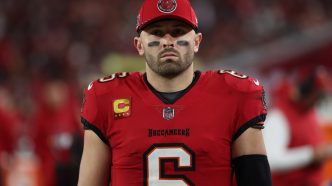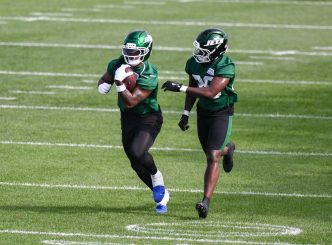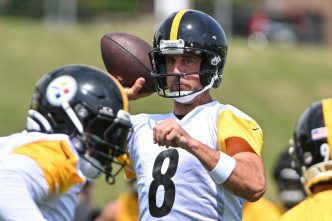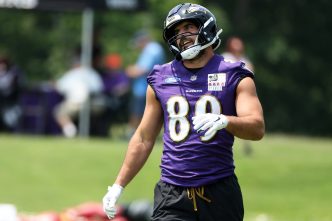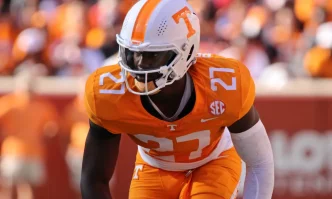The NFL preseason may still be on the horizon, but the Tampa Bay Buccaneers are already facing some serious challenges as they gear up for the upcoming season. On July 9, news broke that All-Pro left tackle Tristan Wirfs will be sidelined after undergoing knee surgery to address an aggravated injury. This is no minor setback for the Bucs; Wirfs is not just a key cog in their offense—he’s widely regarded as one of the premier left tackles in the league.
Surgery on his right knee means Wirfs is expected to miss at least the first couple of games of the regular season. Initially, it seemed like a brief respite might do the trick, but the looming possibility of him landing on the physically unable to perform (PUP) list adds another layer of uncertainty. If that happens, Wirfs could miss a minimum of four games, leaving fans to wonder when their star lineman will return to the field.
The potential absence of Wirfs shakes up the Buccaneers’ aspirations for the season. If his recovery extends beyond Week 4, Tampa Bay could find themselves in a precarious position.
So why is Wirfs’ presence so vital in a sport that thrives on teamwork? While it’s true that NFL success hinges on a complete, well-rounded roster, certain positions carry more weight. The left tackle spot is one of those crucial positions. A dependable blindside protector can significantly alter the dynamics of an offense, especially in the unforgiving atmosphere of the NFL.
Wirfs has consistently demonstrated his elite status throughout his career. He’s made history as the only player in NFL history to earn first-team All-Pro accolades at both left tackle and right tackle, earning a reputation as a powerhouse on the offensive line. With only 12 sacks allowed over 3,789 career pass-blocking snaps, according to Pro Football Focus, his performance is simply exceptional. Last season marked a career high for him—he allowed no sacks and was responsible for just 13 pressures, an extraordinary feat in today’s demanding game.
His influence stretches far beyond individual metrics; Wirfs offers the kind of reliability that allows quarterbacks like Baker Mayfield to function without the constant dread of pressure creeping in from the behind. That kind of protection is essential in executing an effective offensive strategy.
But Wirfs’ injury isn’t the only curveball the Buccaneers are facing. They’re also adjusting to the uncertainties brought on by a new play caller, and there are whispers about Chris Godwin possibly missing some time at the start of the season.
Complicating matters further is Tampa Bay’s challenging early schedule, which could test their mettle. The Buccaneers will encounter hard-hitting edge rushers right out of the gate. In their first few matchups, they’ll face off against Atlanta’s promising rookie duo of Jalon Walker and James Pearce, followed by formidable talents like Will Anderson and Danielle Hunter in Week 2, and then a daunting Philadelphia front seven in Week 4.
With Mayfield likely feeling the heat more than usual and other shifting aspects on offense, it’s not hard to envision the Buccaneers struggling at the start. A poor record like 1-3 is a legitimate concern and hard to overlook.
Historically speaking, starting the season 1-3 isn’t a recipe for success. Since 1990, only 34 out of 235 teams that found themselves in that predicament managed to claw their way into the playoffs. The Buccaneers play in the NFC South, a division known for its ups and downs, which might present a silver lining for a potential recovery. Still, fans have every reason to be nervous. They’ll be hoping for at least a couple of wins while Wirfs is out, especially if his absence extends to four games or more.
In the intense world of NFL football, every snap carries weight, and every injury is magnified. For the Buccaneers, how quickly— and how well— Wirfs can recover may not just impact his season, but could ultimately influence the trajectory of the entire team.

